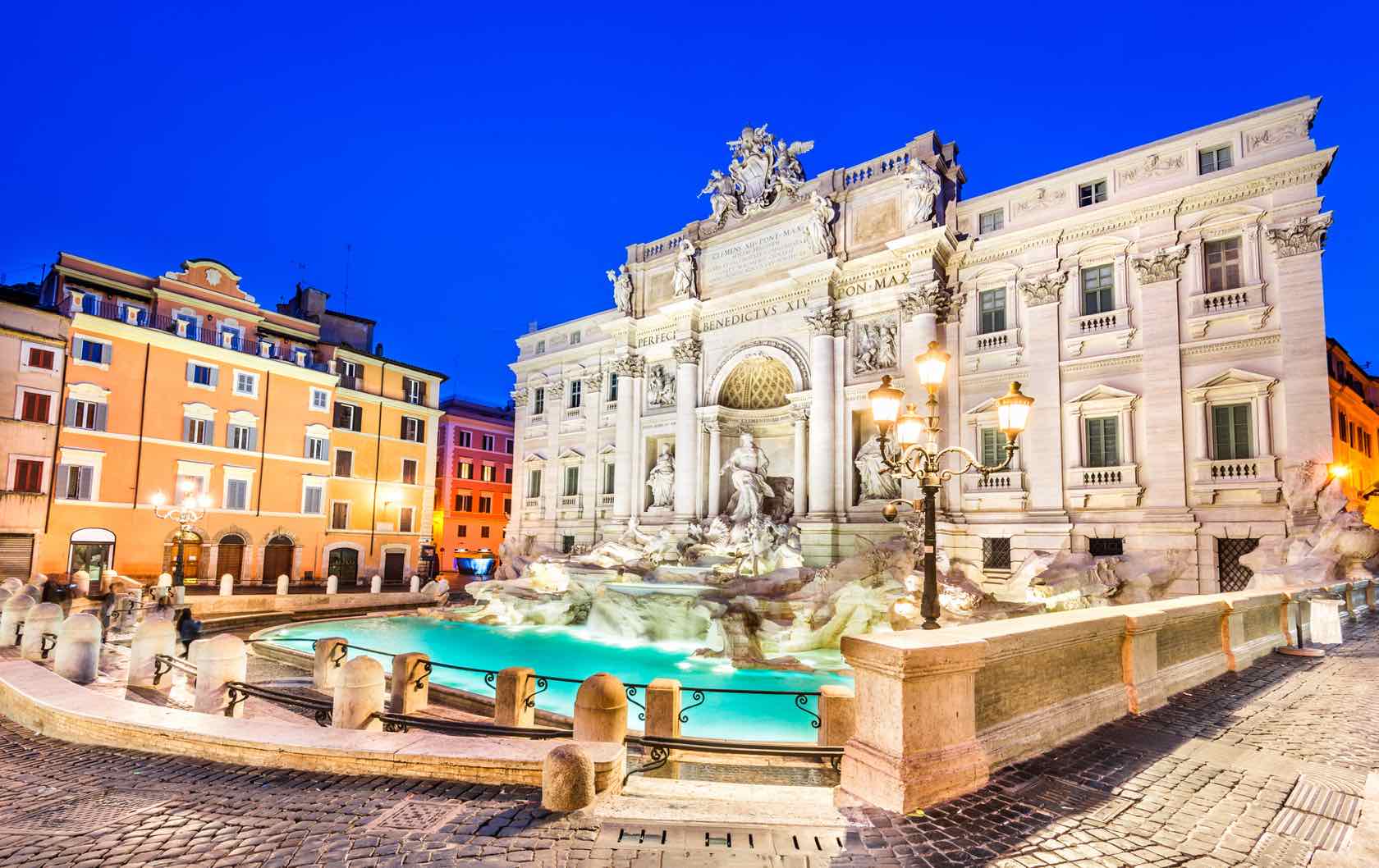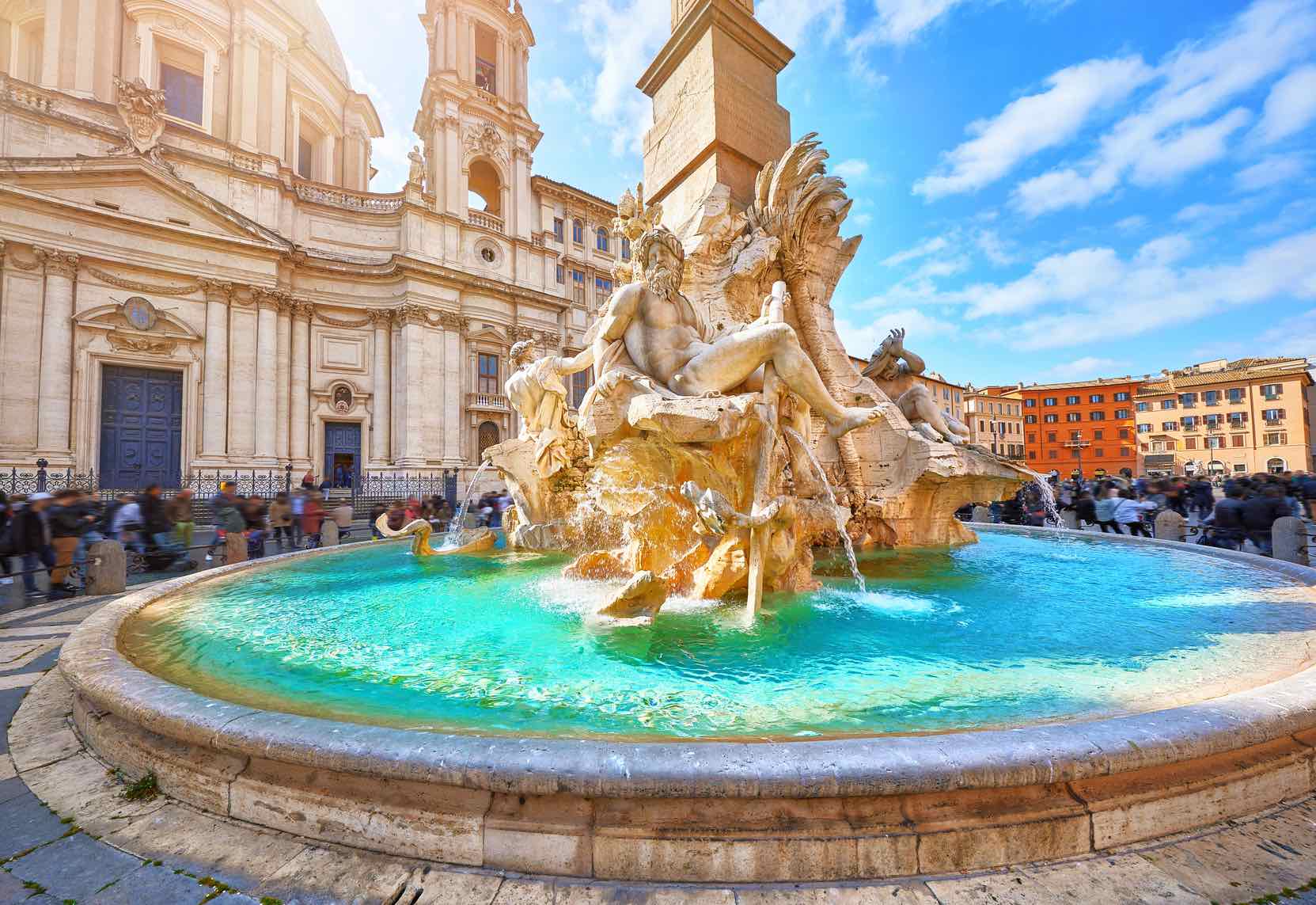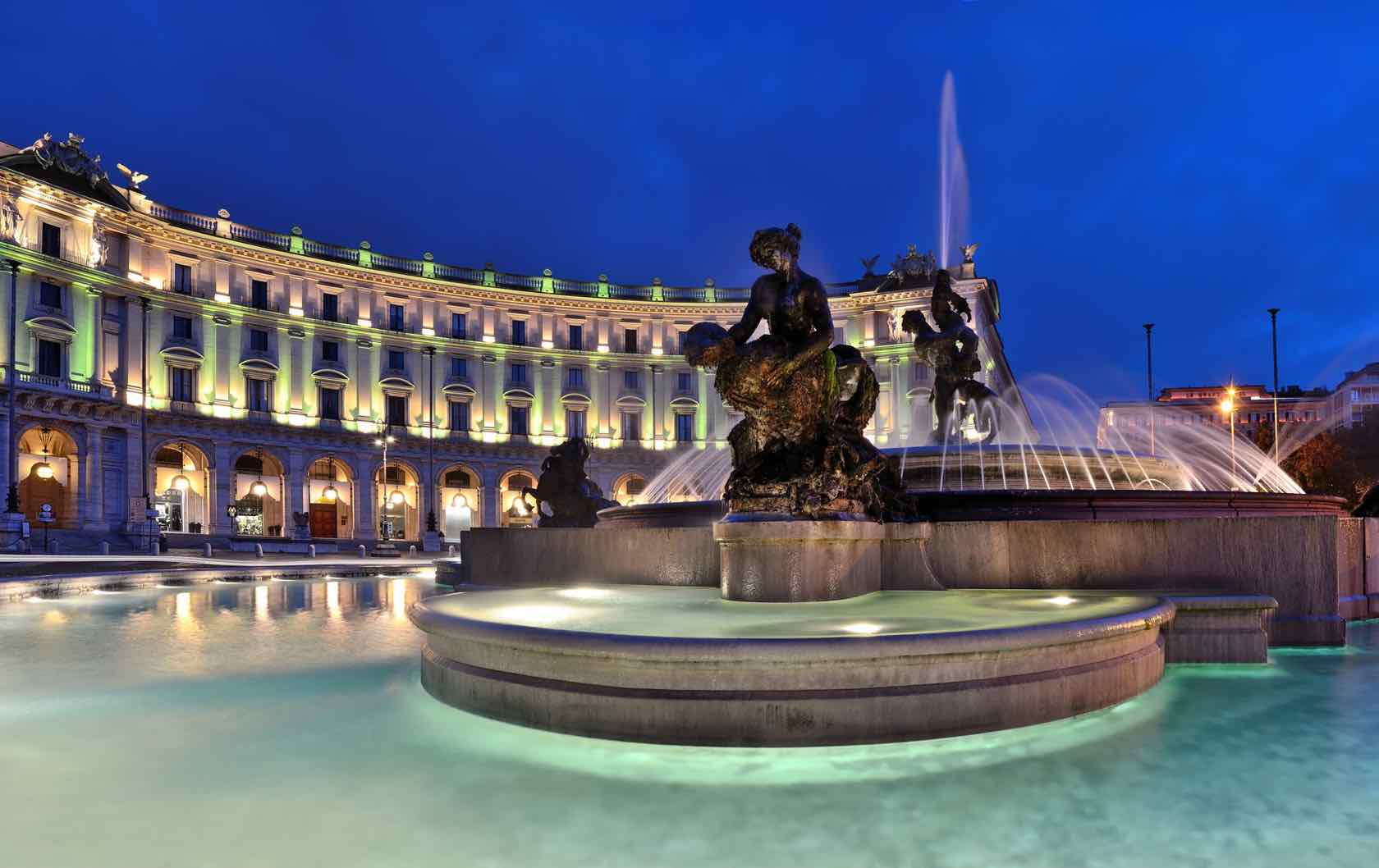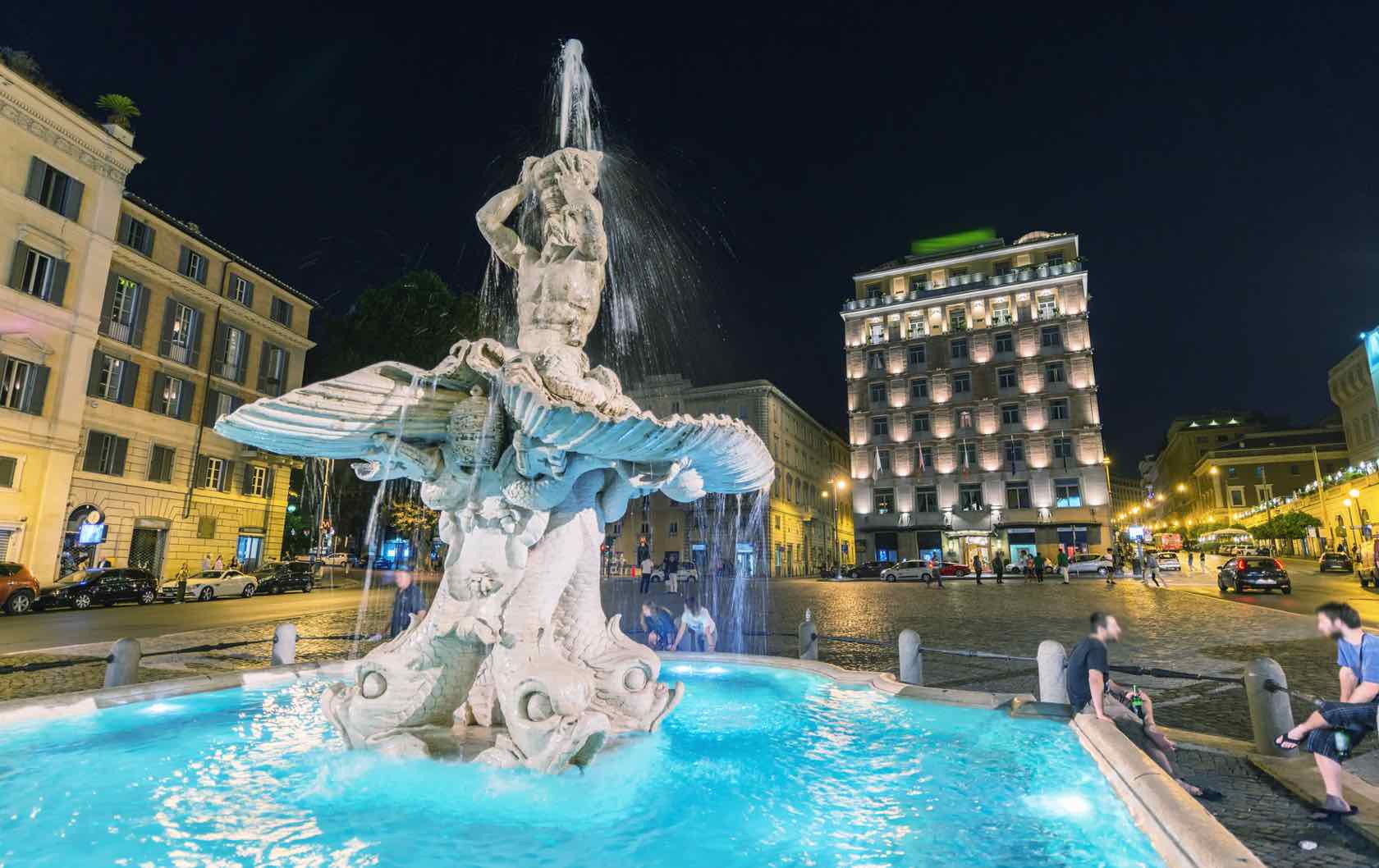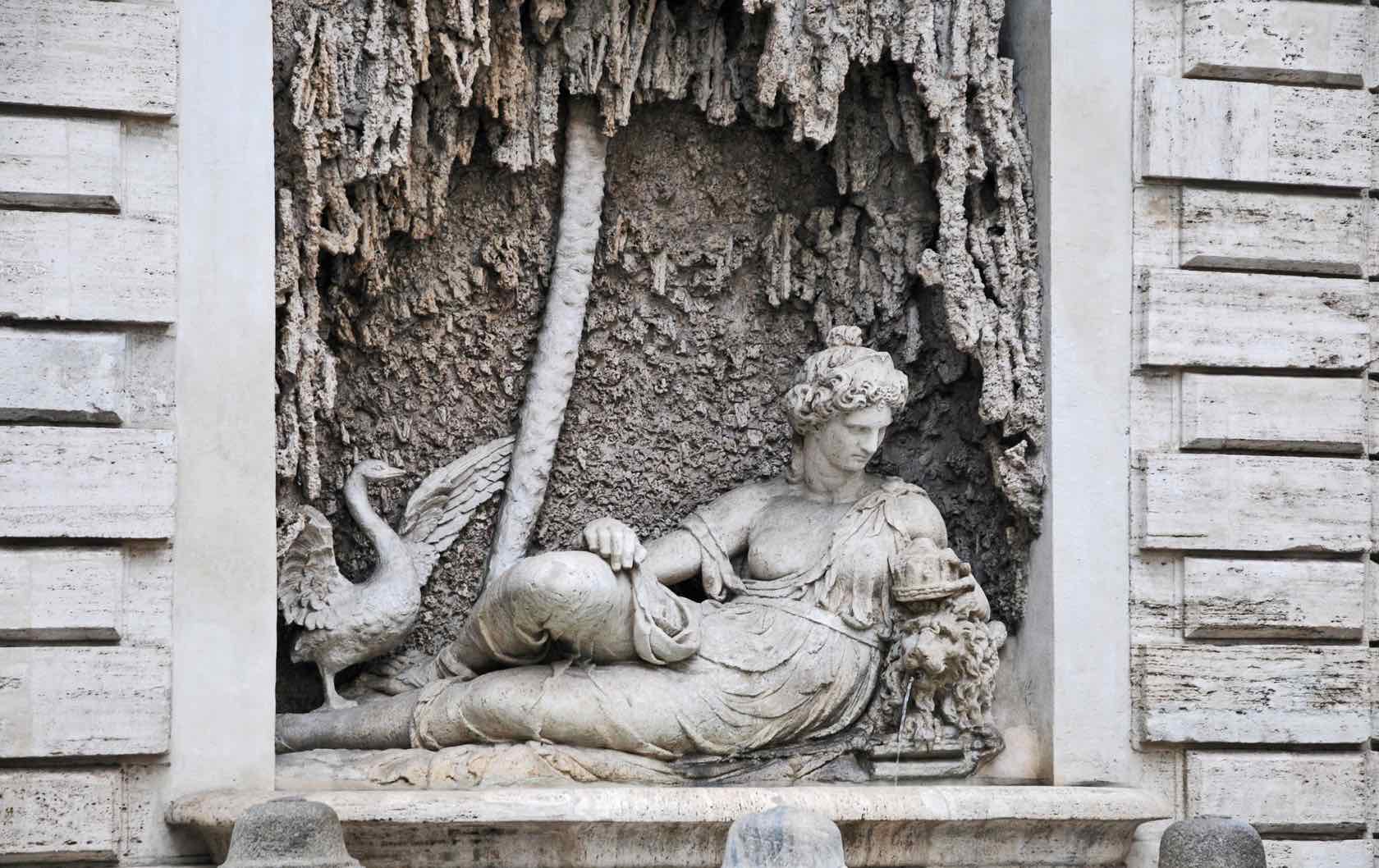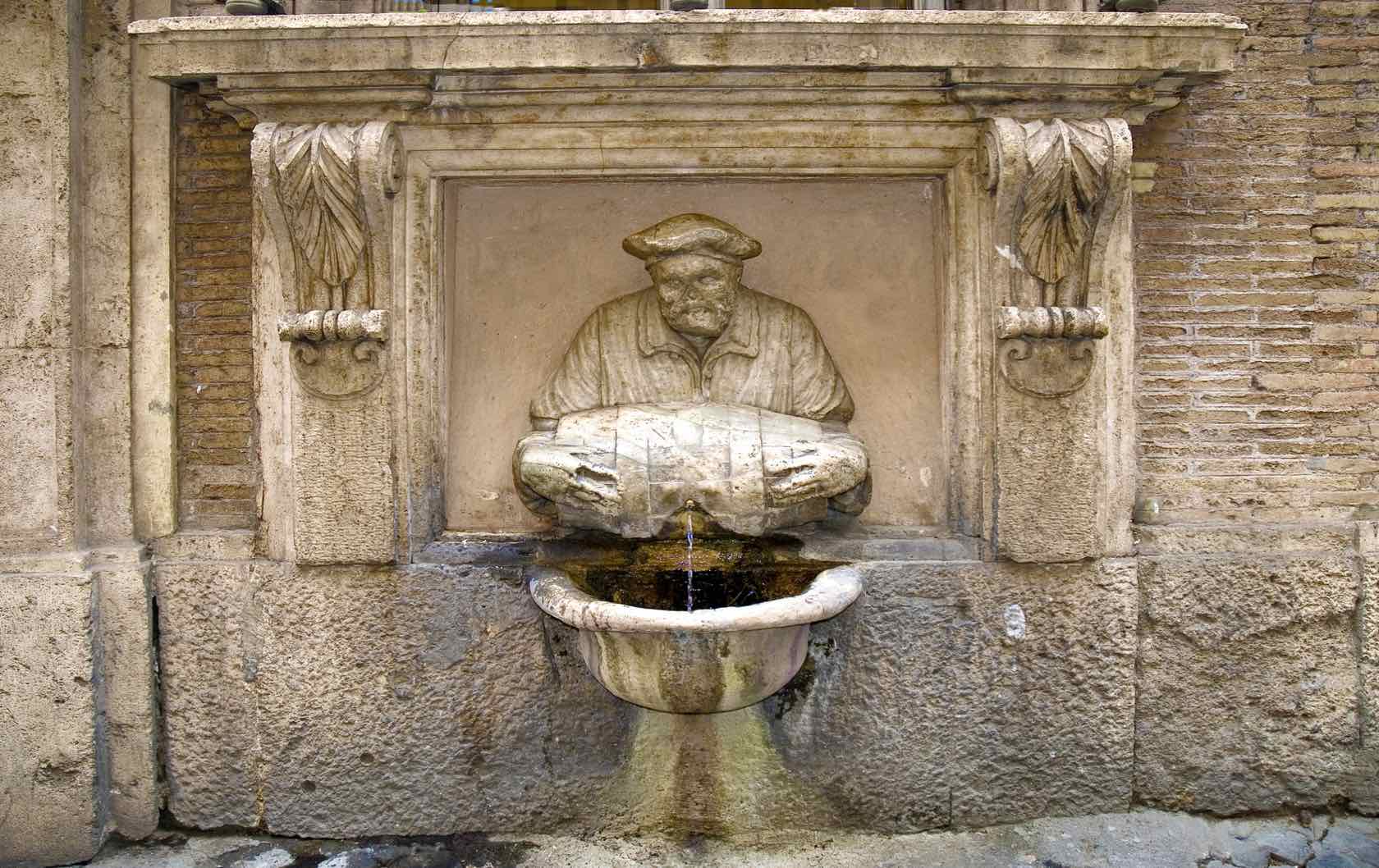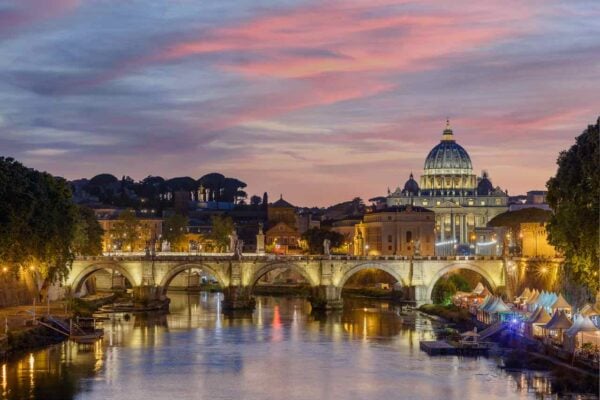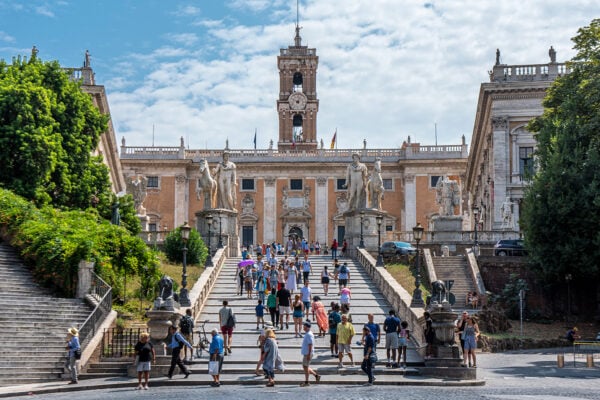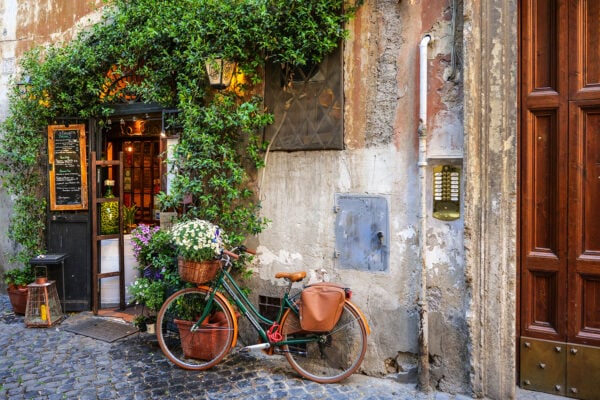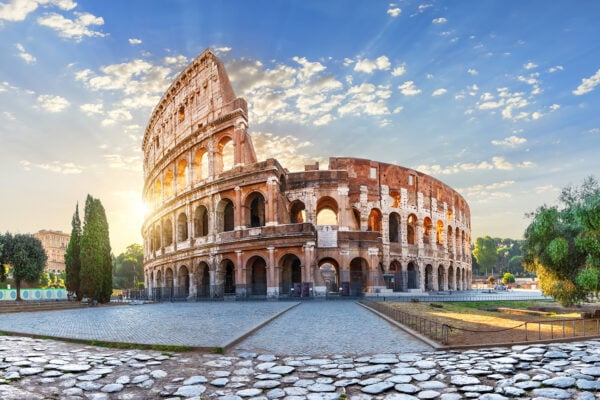In a city of stunning and ancient architecture, it really says something that the fountains in Rome stand out on their own as beautiful attractions. The fountains are not only architectural marvels, but also gathering places for locals, settings for street musicians and the perfect places to relax with an after-dinner gelato. There are also little fountains scattered throughout Rome that are meant to be used for drinking water (these are called “nasone”), where travelers can fill up water bottles. So make sure to have a bottle with you as you’re wandering around.
Discover the Fountains in Rome
Roman fountains are so beloved by Italians and visitors that Respighi, an Italian composer, wrote the beautiful “Fountains of Rome” symphonic poem in 1918, that honors four of the great Roman fountains. Each of the four movements depicts one of Rome’s fountains during a different time of the day. It was first performed on March 11, 1917 at Rome’s Teatro Augusteo under the direction of Antonio Guarnieri. It’s the perfect soundtrack for a day of discovering the city’s famous and ubiquitous fountains. And now, without further ado, some of our favorite fountains in Rome!
Trevi Fountain
Let’s start with one of the most famous fountains in Rome — the Trevi Fountain. This is not only the most famous fountain in Rome, but probably the most famous fountain in the world. It’s also the largest Baroque fountain in Rome! Legend is that if a traveler throws a coin over her left shoulder with her right hand and it lands in the fountain, then she is guaranteed to return to Rome. Three Coins in the Fountain is a charming Academy Award-winning movie from times past. It is estimated that about 3,000 euros are thrown into the fountain every day. In 2016, almost $1.5 million was thrown into the fountain; this money is used to subsidize a supermarket for Rome’s impoverished population, and therefore stealing any money from the fountain is illegal. Fun fact: this is also the fountain where Italy Perfect’s Pat, took a little swim on her graduation night just like Anite Ekberg in the classic film, La Dolce Vita.
La Fontana dei Quattro Fiumi (Fountain of the Four Rivers)
Add this fountain to the list of the many Roman masterpieces designed by Bernini. The artist was commissioned by Pope Innocent X, whose family’s palace overlooked the popular Piazza Navona, where the fountain stands. It’s a distinct structure, different from the other fountains, in that it features a massive Egyptian obelisk through the center, meant to symbolize the power and prestige of the papacy. Surrounding the obelisk are the gods of the four great rivers on the four continents recognized on Renaissance maps at the time of its construction in 1651: the Nile in Africa; the Danube in Europe; the Ganges in Asia; and the Rio de la Plata in South America. Animals and plants from each country surround the gods, and the water cascades down around them. Fun fact: if this fountain sounds familiar, you might have read a description in Dan Brown’s Angels & Demons, where it features as a prominent crime scene!
Italy Perfect has some wonderful apartments nearby: Pasquino, Viola and Cavaliere in the same palazzo.
Fountain of the Naiads in Piazza della Repubblica
If you like a side of scandal with your fountain, look no further than Fountain of the Naiads. This fountain caused a stir when it was first unveiled to the public, as it features four naked naiads (water nymphs). On top of that, it’s believed that the models for the nymphs were two real women who worked as sex workers, shocking in 1901. The naiads are mythological characters who were thought to preside over bodies of fresh water: rivers, brooks, lakes, marshes and more. They were also believed to have had love affairs with gods and human men. Each of the four naiads in this fountain presides over a different body of water and is featured with an animal that lives in that type of water: the Naiad of the Oceans (with a sea horse); the Naiad of the Lakes (with a swan); the Naiad of the Rivers (with a water snake); and the Naiad of Underground Waters (with a reptile).
Triton Fountain and Fountain of the Tritons
No, that’s not a typo – there are two fountains in Rome featuring Triton, a god of the sea. Should you walk between them, you’ll enjoy a wonderful part of the heart of Rome. The Triton Fountain, like the Fountain of the Four Rivers mentioned earlier, was commissioned by a pope and designed by Bernini. Pope Urban VIII wanted a fountain designed for Piazza Barberini, near the entrance to Palazzo Barberini, which Bernini also helped to design and construct for the pope’s family. This fountain is significant because it was the first to bridge the idea of the civic fountain – one that provided water to Rome’s residents – with the idea of a sculptural fountain, which until this time, had been reserved for private gardens in residences and palaces. The Triton Fountain is sculptural, but still provided clean drinking water to the public when it was completed in 1643. Bernini chose a triton for the fountain because of a passage from Ovid’s Metamorphoses, to reference a god-like control over the waters.
The Fountain of the Tritons, meanwhile, is located in the Piazza Bocca della Verità and was completed in 1715. It features two Tritons supporting a large shell, from which water flows. This piazza has more to recommend it with the Mouth of Truth, the unusual four-sided ancient Arch of Janus and two beautiful small ancient temples.
Italy Perfect apartments near this fountain include Rossini’s Wish, Zegno, Ginevra, Corelli Charm and more!
La Fontana delle Api (Fountain of the Bees)
This is a gem of a fountain, small and sweet. Also designed by Bernini, it was designed as a watering trough for horses. The fountain consists of a large shell with three bees resting on the surface. The bees are water spouts for people echoing the three bees on the Barberini coat of arms. It is located in Piazza Barberini with the Triton fountain.
Four Fountains on Via delle Quattro Fontane
The Quattro Fontane refers to four fountains from the late Renaissance period, located at the intersection of Via delle Quattro Fontane and Via del Quirinale. Pope Sixtus V commissioned them, and Muzio Mattei oversaw the construction between 1588 and 1593. The first fountain represents the Tiber River – this is the one with the wolf (the symbol of Rome) as a prominent feature. The second fountain is thought to represent the Aniene River, a tributary of the Tiber, which provided most Roman aqueducts with water at the time. The remaining two fountains feature two important goddesses: Diana, the symbol of chastity, and Juno, the goddess of strength. Several fine artists worked on these fountains, including Domenico Fontana and Pietro da Cortona.
Fountain of the Facchino
What if we told you that there is a “talking statue” among the fountains in Rome? We wouldn’t be lying, but it’s probably not what you think. There are six “talking statues” throughout Rome that hosted public discourse via posters in the 14th and 15th centuries. Il Facchino (The Porter) is distinct from the others only because it was created later – in 1580. It depicts a man who is a water carrier – someone who made a living taking fresh water to people’s homes. It is thought to be a specific man – Abbondio Rizio – who was somewhat notorious for both his strength and his drinking prowess. More on the Talking Statues and the Congress of Wits.
So what do you think of our list of the best fountains in Rome? Did we miss any that you want to see?
Are you ready to book your say in Rome? Contact Italy Perfect at [email protected] or 1-888-308-6123.
